The Health e-Bulletin is a semi-annual online publication produced by FUTURES and the National Health Resource Center on Domestic Violence. The publication began in October 2013, and replaces the Family Violence Prevention and Health Practice E-Journal.

This special Domestic Violence Awareness Month issue of the Health e-Bulletin, created in partnership with the National Center on Domestic Violence, Trauma, and Mental Health, focuses on how DV advocates and communities are working to support people who use drugs or struggle with drug addiction.
Download the DVAM 2018 Health e-Bulletin.
In this edition:
Letter from guest editor, Dr. Carole Warshaw from the National Center on Domestic Violence, Trauma, and Mental health
Committed to figuring it out: Meeting survivors where they are at in Ohio by Rachel Ramirez, Ohio Domestic Violence Network
Interview with a harm reductionist: Haven Wheelock, Outside In
Changing landscape: 30 years at the intersection of healing, accountability, and addiction by Tony Lapp, Menergy
Interview with an advocate who is doing the work: Stefani Keys, Family Refuge Center
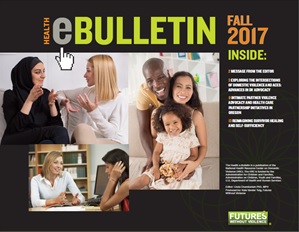 The Fall 2017 Health e-Bulletin highlights the ground-breaking strides in the field of domestic violence advocacy across the country to advance the health and wellness of survivors and their families.
The Fall 2017 Health e-Bulletin highlights the ground-breaking strides in the field of domestic violence advocacy across the country to advance the health and wellness of survivors and their families.
Download the Fall 2017 Health e-Bulletin
In this edition:
Exploring the Intersection Between Domestic Violence and ACES: Advances in DV Advocacy – Linda Chamberlain, PhD, MPH
Intimate Partner Violence Advocacy and Health Care Partnership Initiatives in Oregon – Christine Heyen, MA, Oregon Safer Futures Project, Oregon Department of Justice, Crime and Victims’ Services Division; Emily Fanjoy, Tillamook County Women’s Resource Center; Kimber Lundy, Tillamook County Women’s Resource Center
Re-imagining Survivor Healing and Self-Sufficiency: A Different Kind of Advocacy in Kentucky – Darlene Thomas, MSSW, GreenHouse17
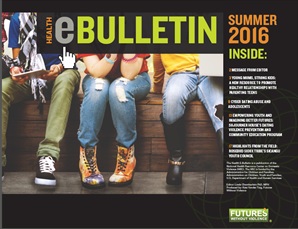
The Summer 2016 Health e-Bulletin highlights the work being done around the country with young people who have experienced violence and harassment. This edition lifts their voices to find how we, as a field, can meet their needs and better support young people in ways they deserve.
Download the Summer 2016 e-Bulletin
In this edition:
Young Moms, Strong Kids: A New Resource to Promote Healthy Relationships With Parenting Teens – Heather Baeckel, MSW, Insights Teen Parent Services, and Erin Fairchild, MSW, Defending Childhood Program
Cyber Dating Abuse and Adolescents – Rebecca Dick, MS, University of Pittsburgh Children’s Hospital of UPMC, and Elizabeth Miller, MD, PhD, University of Pittsburgh Children’s Hospital of UPMC

The Winter 2015 Health e-Bulletin highlights the work being done around supporting survivors of trauma in health settings and the intersection of HIV and and violence – including model programs, a survivor story and policy changes.
Download the Winter 2015 Health e-Bulletin
In this edition:
Addressing Lifetime Trauma in Primary Care: Caring for Ourselves While Caring For Others – Leigh Kimberg, MD UCSF and Eddy Machtinger, MD UCSF Women’s HIV Program
A Moment in Time, Now: Mindfulness and Healing From Trauma – Lisa Lachance Hartwick LICSW, Center for Violence Prevention and Recovery
Fostering Choice, Voice and Agency to Improve the Health and Wellness of Women Living With HIV: Trauma Informed Care at Christie’s Place – Erin C. Falvey, PhD, Christie’s Place and Sara Durán, Christie’s Place
Priscilla’s Story – Priscilla Mahannah, Christie’s Place
Changing Policies to Address Violence and Trauma for Women Living With HIV – Naina Khanna, Positive Women’s Network-USA and Jennie Smith-Camejo, Positive Women’s Network-USA
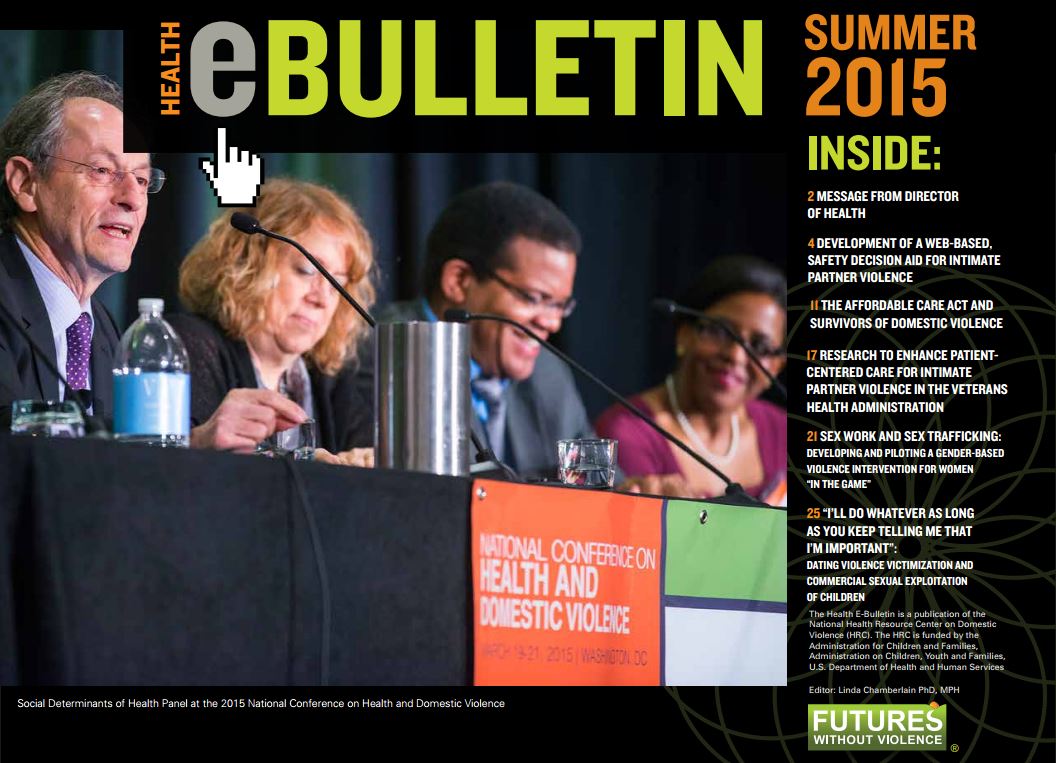
The Summer 2015 Health e-Bulletin showcases some of the amazing work that was presented at the 2015 National Conference on Health and Domestic Violence on health care coverage for survivors, safety decision aids, new approaches to assessing for violence, and more!
Download the Summer 2015 Health e-Bulletin
In this edition:
Development of a Web-Based Safety Decision Aid For Intimate Partner Violence – Nancy Glass PhD, MPH, RN, FAAN, Johns Hopkins School of Nursing
The Affordable Care Act and Survivors of Domestic Violence – Lena O’Rourke, MPP, O’Rourke Health Policy Strategies
Research to Enhance Patient-Centered Care for Intimate Partner Violence in the Veterans Health Administration – Melissa E. Dichter, PhD, MSW, VA Center for Health Equity Research and Promotion Katherine M. Iverson, PhD, MA, Women’s Health Sciences Division of the National Center for PTSD, VA Boston Healthcare System Department of Psychiatry, Boston University School of Medicine
Sex Work and Sex Trafficking: Developing and Piloting a Gender-Based Violence Intervention for Women “in The Game” – Michele Decker, ScD, MPH, Johns Hopkins Bloomberg School of Public Health
“I’ll do whatever as long as you keep telling me that I am important”: Dating Violence Victimization and Commercial Sexual Exploitation of Children – Emily F. Rothman, ScD, Boston University School of Public Health
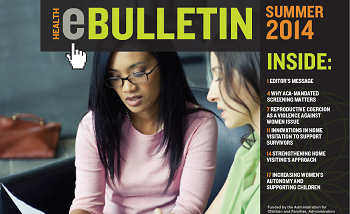 The Summer 2014 Health e-Bulletin highlights innovative practices and evidence-based interventions for home visitation programs that serve families and children experiencing domestic violence.
The Summer 2014 Health e-Bulletin highlights innovative practices and evidence-based interventions for home visitation programs that serve families and children experiencing domestic violence.
Download the Summer 2014 Health e-Bulletin
In this edition:
Why ACA-Mandated Screening Matters – Bullock, L. PhD, RN, FAAN, University of Virginia, School of Nursing Bacchus, L., PhD, London School of Hygiene & Tropical Medicine, Dept. of Global Health and Development Sharps, P., PhD, RN, FAAN, Johns Hopkins University, School of Nursing
Reproductive Coercion as a Violence Against Women Issue – Laurie K. Crawford, MPA, Sexual and Domestic Violence Healthcare Outreach Coordinator, Virginia Department of Health
Innovations in Home Visitation to Support Survivors – Erin Fairchild, MSW Defending Childhood Initiative Coordinator, Multnomah County Domestic Violence Coordination Office
Strengthening Home Visiting’s Approach – Pam LaHaye, Coordinator, Maine Families Home Visiting
Increasing Women’s Autonomy and Supporting Children – Leigh Hofheimer, Program Coordinator, Washington State Coalition Against Domestic Violence
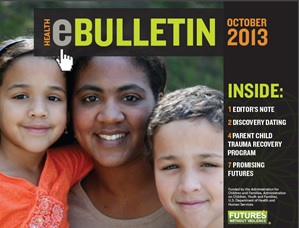 The Fall 2013 Health e-Bulletin focuses on children and families experiencing domestic violence.
The Fall 2013 Health e-Bulletin focuses on children and families experiencing domestic violence.
Download the Fall 2013 Health e-Bulletin
In this edition:
Discovery Dating – Alice Skenandore, Executive Director & Jen Schanen, Program Outreach Specialist, Wise Women Gathering Place
Parent Child Trauma Recovery Program – Gail Arnold, M.Psych, LMHC, Clinical Director, Parent Child Trauma Recovery Program, MassGeneral for Children, North Shore Medical Center, Salem, Massachusetts Peg Tiberio, Director of Trauma Recovery Services, HAWC (Healing Abuse, Working for Change), Salem, Massachusetts
Promising Futures – Leiana Kinnicutt, MSW Program Manager Futures Without Violence
About the Editor
Linda Chamberlain, PhD, MPH
 Scientist, author, professor, dog musher, and founder of the Alaska Family Violence Prevention Project, Dr. Linda Chamberlain is an internationally recognized keynote speaker and champion for health issues related to domestic violence and adverse childhood experiences, brain development and trauma, and the amazing adolescent brain. She is known for her abilities to translate science into practical information with diverse audiences and convey a message of hope and opportunity. Dr. Chamberlain holds faculty appointments at the University of Alaska and Johns Hopkins Bloomberg School of Public Health. She earned public health degrees from Yale School of Medicine and Johns Hopkins University. The author of numerous publications and resources including the Public Health Toolkit and the Amazing Brain booklet series, she is also co-author of Addressing Intimate Partner Violence, Reproductive Health and Sexual Coercion Guidelines and Healthy Moms, Happy Babies, a train-the-trainer curriculum on domestic violence and reproductive coercion, developed for home visitation programs. Awards and recognition for her work include a National Kellogg Leadership Fellowship and an Alaska Women of Achievement Award. She served as the 2012-2013 Inaugural Scattergood Foundation Scholar for children’s behavioral health. Living on a rural homestead outside of Homer, Alaska with her husband and dog team, she has created an innovative lecture series on leadership and teamwork that incorporates lessons from the trail based on her experiences as a dog musher. For more information about Dr. Chamberlain, visit www.drlindachamberlain.com.
Scientist, author, professor, dog musher, and founder of the Alaska Family Violence Prevention Project, Dr. Linda Chamberlain is an internationally recognized keynote speaker and champion for health issues related to domestic violence and adverse childhood experiences, brain development and trauma, and the amazing adolescent brain. She is known for her abilities to translate science into practical information with diverse audiences and convey a message of hope and opportunity. Dr. Chamberlain holds faculty appointments at the University of Alaska and Johns Hopkins Bloomberg School of Public Health. She earned public health degrees from Yale School of Medicine and Johns Hopkins University. The author of numerous publications and resources including the Public Health Toolkit and the Amazing Brain booklet series, she is also co-author of Addressing Intimate Partner Violence, Reproductive Health and Sexual Coercion Guidelines and Healthy Moms, Happy Babies, a train-the-trainer curriculum on domestic violence and reproductive coercion, developed for home visitation programs. Awards and recognition for her work include a National Kellogg Leadership Fellowship and an Alaska Women of Achievement Award. She served as the 2012-2013 Inaugural Scattergood Foundation Scholar for children’s behavioral health. Living on a rural homestead outside of Homer, Alaska with her husband and dog team, she has created an innovative lecture series on leadership and teamwork that incorporates lessons from the trail based on her experiences as a dog musher. For more information about Dr. Chamberlain, visit www.drlindachamberlain.com.



 The Fall 2017
The Fall 2017 


 The Summer 2014
The Summer 2014  The Fall 2013
The Fall 2013  Scientist, author, professor, dog musher, and founder of the Alaska Family Violence Prevention Project, Dr. Linda Chamberlain is an internationally recognized keynote speaker and champion for health issues related to domestic violence and adverse childhood experiences, brain development and trauma, and the amazing adolescent brain. She is known for her abilities to translate science into practical information with diverse audiences and convey a message of hope and opportunity. Dr. Chamberlain holds faculty appointments at the University of Alaska and Johns Hopkins Bloomberg School of Public Health. She earned public health degrees from Yale School of Medicine and Johns Hopkins University. The author of numerous publications and resources including the Public Health Toolkit and the Amazing Brain booklet series, she is also co-author of Addressing Intimate Partner Violence, Reproductive Health and Sexual Coercion Guidelines and Healthy Moms, Happy Babies, a train-the-trainer curriculum on domestic violence and reproductive coercion, developed for home visitation programs. Awards and recognition for her work include a National Kellogg Leadership Fellowship and an Alaska Women of Achievement Award. She served as the 2012-2013 Inaugural Scattergood Foundation Scholar for children’s behavioral health. Living on a rural homestead outside of Homer, Alaska with her husband and dog team, she has created an innovative lecture series on leadership and teamwork that incorporates lessons from the trail based on her experiences as a dog musher. For more information about Dr. Chamberlain, visit
Scientist, author, professor, dog musher, and founder of the Alaska Family Violence Prevention Project, Dr. Linda Chamberlain is an internationally recognized keynote speaker and champion for health issues related to domestic violence and adverse childhood experiences, brain development and trauma, and the amazing adolescent brain. She is known for her abilities to translate science into practical information with diverse audiences and convey a message of hope and opportunity. Dr. Chamberlain holds faculty appointments at the University of Alaska and Johns Hopkins Bloomberg School of Public Health. She earned public health degrees from Yale School of Medicine and Johns Hopkins University. The author of numerous publications and resources including the Public Health Toolkit and the Amazing Brain booklet series, she is also co-author of Addressing Intimate Partner Violence, Reproductive Health and Sexual Coercion Guidelines and Healthy Moms, Happy Babies, a train-the-trainer curriculum on domestic violence and reproductive coercion, developed for home visitation programs. Awards and recognition for her work include a National Kellogg Leadership Fellowship and an Alaska Women of Achievement Award. She served as the 2012-2013 Inaugural Scattergood Foundation Scholar for children’s behavioral health. Living on a rural homestead outside of Homer, Alaska with her husband and dog team, she has created an innovative lecture series on leadership and teamwork that incorporates lessons from the trail based on her experiences as a dog musher. For more information about Dr. Chamberlain, visit
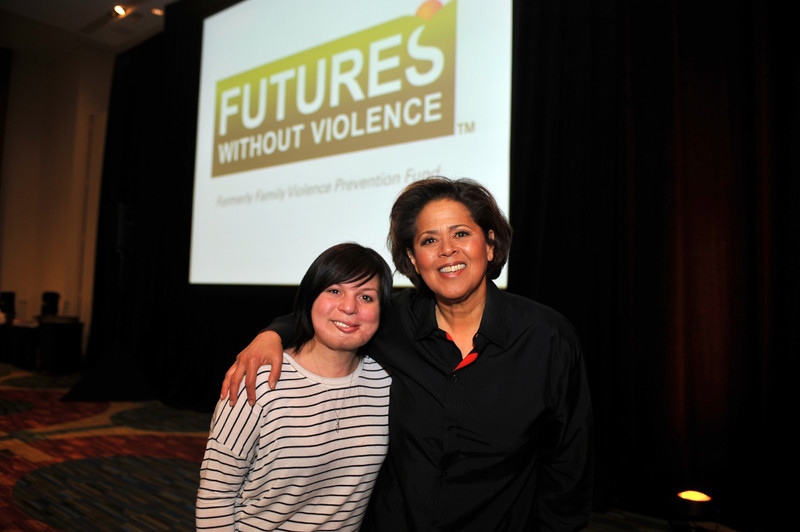
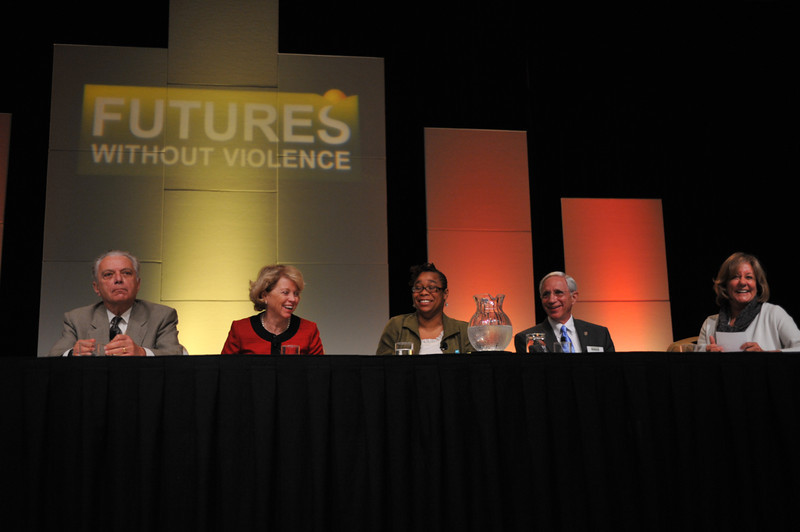

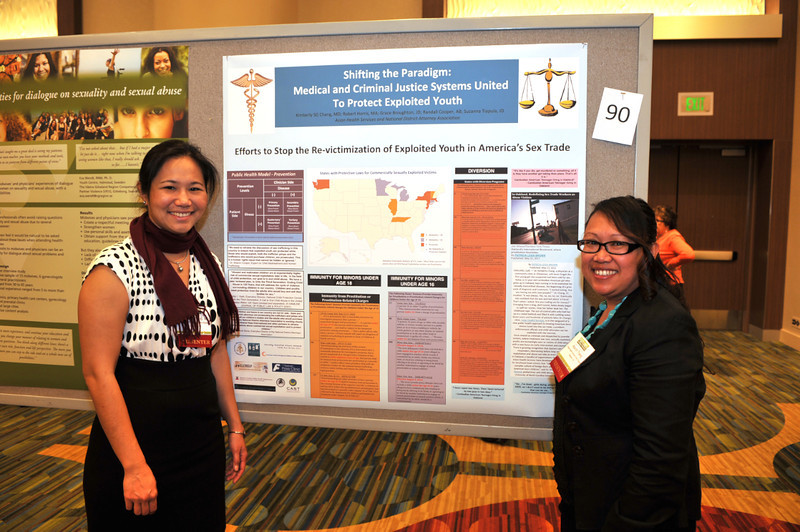
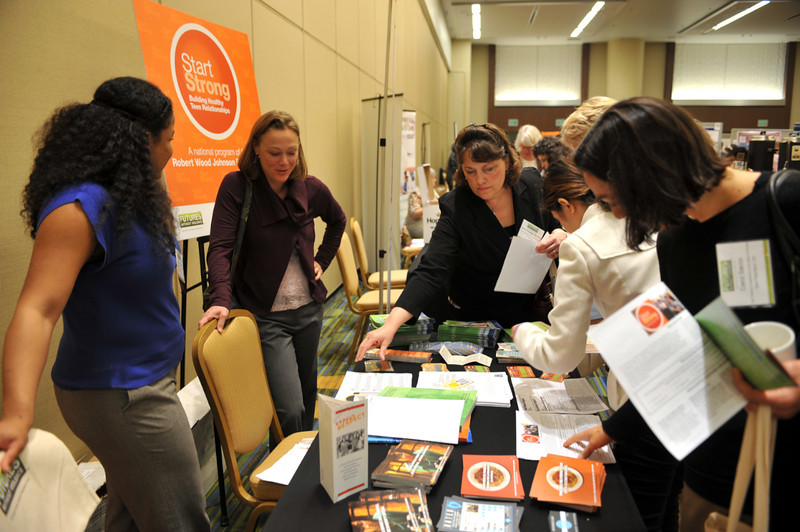
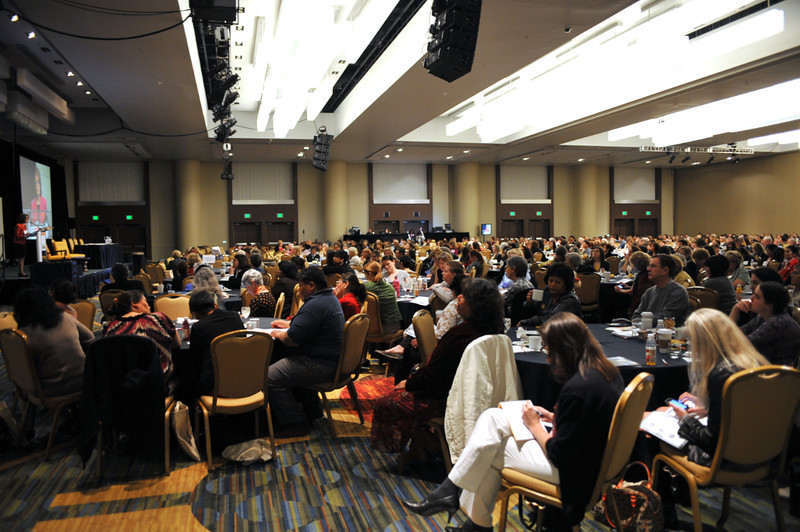
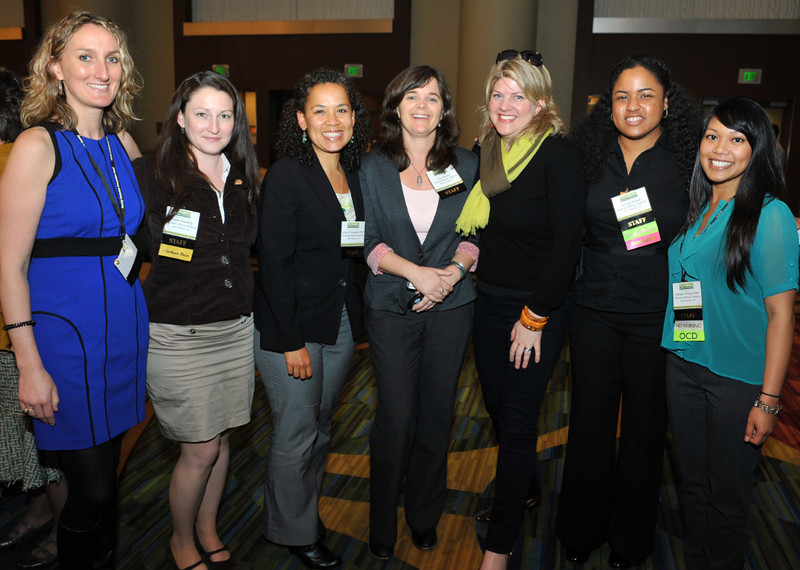


 Many men who have been violent have contact with their children. The contact may be supervised or unsupervised, in the home or elsewhere, but relationships between fathers and children tend to endure. Even men who do not have direct contact with their children live on in their children’s minds. Positive involvement by a father figure is important to children’s development. Yet, until now, few tools have been available to help fathers who have perpetrated family violence relate to their children in positive ways.
Many men who have been violent have contact with their children. The contact may be supervised or unsupervised, in the home or elsewhere, but relationships between fathers and children tend to endure. Even men who do not have direct contact with their children live on in their children’s minds. Positive involvement by a father figure is important to children’s development. Yet, until now, few tools have been available to help fathers who have perpetrated family violence relate to their children in positive ways.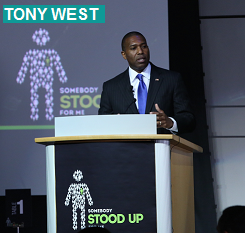 “A society that fails to make investments in its children does so at its own peril,” said keynote speaker Tony West, Associate Attorney General at the U.S. Department of Justice. West acknowledged the sobering data on the effects of violence against children, but also stressed the importance of identifying and investing in evidence-based programs that are already making a real impact around the country. “The violence is not inevitable,” he said.
“A society that fails to make investments in its children does so at its own peril,” said keynote speaker Tony West, Associate Attorney General at the U.S. Department of Justice. West acknowledged the sobering data on the effects of violence against children, but also stressed the importance of identifying and investing in evidence-based programs that are already making a real impact around the country. “The violence is not inevitable,” he said.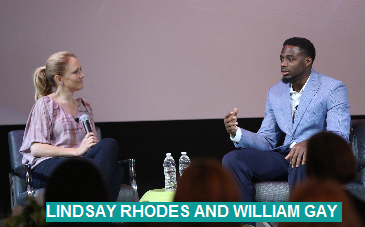 The luncheon keynote featured Pittsburgh Steelers cornerback William Gay, a childhood trauma survivor and advocate for children and survivors of domestic abuse. He spoke about his experience recovering from the trauma of his mother, who was shot and killed by his stepfather. “Talking about it allowed me to get out bottled up feelings. I got on the field to play for something,” he said. “I wanted to beat the statistics,” referring to data that shows children who experience such traumas face major difficulties later in life.
The luncheon keynote featured Pittsburgh Steelers cornerback William Gay, a childhood trauma survivor and advocate for children and survivors of domestic abuse. He spoke about his experience recovering from the trauma of his mother, who was shot and killed by his stepfather. “Talking about it allowed me to get out bottled up feelings. I got on the field to play for something,” he said. “I wanted to beat the statistics,” referring to data that shows children who experience such traumas face major difficulties later in life.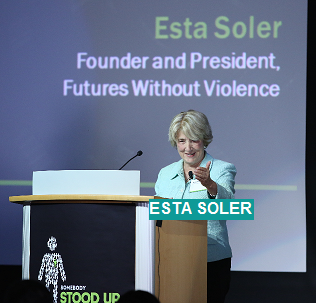 Event organizer Esta Soler, Founder and President of Futures Without Violence, introduced the necessity of a national pubic education campaign to raise visibility on childhood trauma in the year ahead, and thanked the Summit sponsors, The California Endowment and the Blue Shield of California Foundation.
Event organizer Esta Soler, Founder and President of Futures Without Violence, introduced the necessity of a national pubic education campaign to raise visibility on childhood trauma in the year ahead, and thanked the Summit sponsors, The California Endowment and the Blue Shield of California Foundation.
